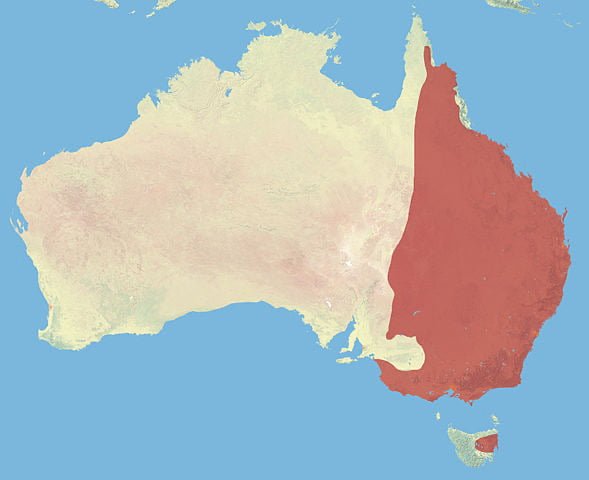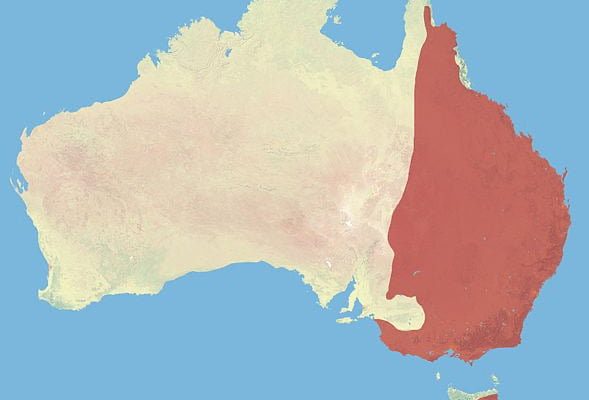
You might be wondering: what exactly makes a habitat perfect for these kangaroos? It’s all about finding the right mix of food, shelter, and space to roam. Think of it as a balance—just like we need the right conditions to thrive in our homes. From the lush grasslands to the forests, let’s dive into the diverse environments that support this incredible species.
Understanding the Eastern Grey Kangaroo
The eastern grey kangaroo (Macropus giganteus) is one of the largest species of kangaroo, with males often reaching up to 8 feet in length, including their tails! They typically weigh between 110 to 150 pounds. These kangaroos are well-known for their strong hind legs, which allow them to leap great distances—up to 30 feet in a single bound!
But it’s not just their impressive size and leaping abilities that make them special; it’s also their adaptability. Eastern grey kangaroos can thrive in various habitats, which leads to a broad distribution across the southeastern part of Australia.
Natural Habitat of Eastern Grey Kangaroos
Eastern grey kangaroos are primarily found in open grasslands, woodlands, and forests. They thrive in areas that offer a mix of open spaces for grazing and some cover for safety from predators. The grasslands provide them with plenty of food options, mainly grasses and herbs, while the wooded areas give them a place to hide from danger.
You might find these kangaroos grazing in parks, reserves, and even suburban areas, where they sometimes venture into gardens in search of a snack. They are particularly comfortable in areas with rich soil that fosters lush grass growth. This makes places like the Australian Capital Territory, parts of New South Wales, and Victoria perfect for their lifestyle.
Preferred Environment Characteristics
When it comes to the specific characteristics of their habitat, eastern grey kangaroos prefer regions that are:
- Grazing-friendly: They need ample grass to munch on, so fertile areas are ideal.
- Well-drained: Kangaroos avoid overly wet areas where grass can be sparse.
- Public parks and reserves: Many urban areas provide safe havens with plenty of food and minimal threats.
This combination of factors helps kangaroos flourish in their natural environment.
Distribution Across Australia
Now let’s talk about where these kangaroos call home. Eastern grey kangaroos have a wide distribution, mainly found in the southeastern regions of Australia. You can spot them in various states, including:
- New South Wales: They’re quite common in rural and urban areas.
- Victoria: In this state, you can see them in both city parks and rural landscapes.
- Queensland: Their range extends into the southern parts of this state as well.
This widespread presence indicates their adaptability and resilience. They can thrive in forests, scrublands, and even near human settlements, which makes them familiar sighting for those living in these areas.
Impact of Climate on Habitat
Climate plays a significant role in the distribution of eastern grey kangaroos. These animals are highly adaptable, but they do have preferences. They typically flourish in temperate climates, which provide mild winters and warm summers.
Extreme weather events can impact their habitat availability. For instance, prolonged droughts can reduce grass availability, pushing kangaroos to seek food in urban areas or more suitable habitats. It’s also important to note that heavy rainfall can lead to flooding, which can threaten their grasslands.
Despite these challenges, eastern grey kangaroos have shown a remarkable ability to adjust their range based on climatic changes. This flexibility is key to their survival in an ever-changing environment.
Urban Adaptation of Eastern Grey Kangaroos
It’s fascinating to see how eastern grey kangaroos adapt to urban environments. As cities expand, these kangaroos have adjusted their living patterns, often moving into public parks and even residential areas in search of food.
Some urban environments provide them with:
- Safe spaces: Parks with grass and trees serve as ideal habitats.
- Food sources: Gardens and lawns become alternative grazing sites.
- Community awareness: Many urban dwellers enjoy watching these kangaroos, which raises awareness and promotes conservation.
However, this adaptation comes with its own set of challenges. Increased traffic can pose dangers to kangaroos attempting to cross roads. Community initiatives often work to protect them, emphasizing the importance of coexistence.
Conservation Efforts for Eastern Grey Kangaroos
As with any wildlife, conservation efforts play a crucial role in maintaining healthy populations of eastern grey kangaroos. Different organizations and government bodies work tirelessly to create safe environments for these animals.
Some key conservation strategies include:
- Habitat restoration: Rehabilitating degraded lands to support grass growth.
- Public education: Teaching communities about the significance of these kangaroos and how they can coexist.
- Animal protection laws: Ensuring that hunting and other harmful activities are monitored and controlled.
These efforts not only help kangaroos but also benefit the entire ecosystem. Healthy populations of these kangaroos contribute to grassland maintenance and biodiversity.
Eastern grey kangaroos are more than just a symbol of Australia; they’re a testament to nature’s adaptability and resilience. Their ability to thrive in diverse environments, from open grasslands to urban parks, reflects a deep connection with the land and the delicate balance of ecosystems.
As we continue to learn about their habits and habitats, let’s not forget our role in protecting these incredible animals. By fostering understanding and taking part in conservation efforts, we can ensure that future generations get to enjoy the sight of these majestic kangaroos hopping gracefully across the Australian landscape. So, the next time you see a kangaroo, remember that it’s more than just a creature of the wild; it’s a vital part of our natural heritage, deserving of respect and protection.

